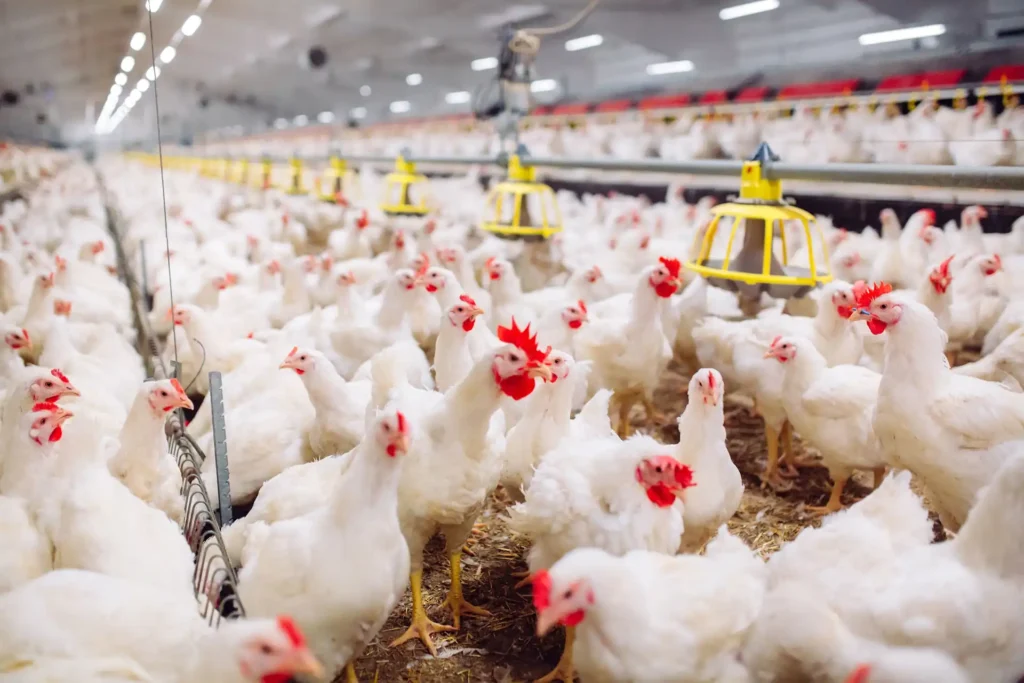1. Gastrointestinal Challenges under High Temperature and Humidity: Why is Summer a High-Incidence Season for Diseases?

For livestock and poultry, the digestive tract is a very important channel for nutrient absorption, especially the stomach and small intestine, which are key organs and tissues for food digestion and nutrient absorption. Summer, characterized by high temperatures, high humidity, and rainy weather, presents a significant challenge. Even humans, enjoying iced watermelon, cold drinks, and air-conditioned rooms, cannot escape the “high probability” of gastrointestinal diseases during this season! Therefore, for livestock and poultry raised and managed in confined spaces, without the ability to seek shade from the sun, find dry places away from moisture, or enjoy air conditioning when the temperature is too high, the high incidence of gastrointestinal diseases in this season is inevitable. Even in developed European and American countries with advanced husbandry management and high animal welfare standards, their livestock and poultry farming cannot overcome this natural, cyclical disease prevention and control challenge. Given this, with increasingly stringent food safety regulations and the fact that new hotspot ingredients such as acidifiers, enzymes, prebiotics, probiotics, and phytogenic feed additives have not effectively solved livestock and poultry gastrointestinal problems, how can we effectively prevent and control these diseases?
2. Pathogen Spectrum and Drug Selection: The Clinical Value of Lincomycin and Colistin Sulfate
In the new landscape of the veterinary drug industry, effectively preventing and controlling these diseases necessitates a clear understanding of the currently prevalent clinical gastrointestinal diseases to enable targeted and effective medication and treatment. From the perspective of disease etiology and drug application pharmacology, the pathogenic bacteria causing livestock and poultry gastrointestinal diseases include Escherichia coli, Salmonella, Clostridium perfringens, some Staphylococcus and Enterococcus species, as well as non-pathogenic nutritional imbalance enteritis. Based on this pathogen spectrum, we recommend lincomycin for controlling Clostridium perfringens and some Gram-positive bacteria. It is currently the only anti-anaerobic drug compliant with food safety requirements in veterinary clinical practice, with a short withdrawal period and effectiveness against some Gram-positive bacteria. For gastrointestinal pathogenic Gram-negative bacteria such as E. coli, Salmonella, and Shigella, the most effective and sensitive drug that also meets food safety standards is colistin sulfate.
These gastrointestinal disease treatment drugs exert their antibacterial efficacy by rapidly killing the aforementioned pathogens at microgram or sub-microgram concentrations. This contrasts with acidifiers, enzymes, prebiotics, probiotics, and phytogenic feed additives, which may have some sterilizing effects at gram levels but require addition in hundreds of kilograms per ton of feed to achieve significant bactericidal effects. Currently, the clinical dosage of so-called intestinal bacteria-acting ingredients in commercially raised animals is mostly a few hundred grams, up to a kilogram, per ton of feed. Therefore, non-drug components like acidifiers, enzymes, prebiotics, probiotics, and phytogenic feed additives are primarily health-promoting agents that regulate, improve, and promote growth, rather than treating pathological conditions. Next, let’s examine the pharmacological characteristics and application of colistin sulfate.
Pharmacologically classified as a polypeptide antibiotic, colistin sulfate is a natural narrow-spectrum antibiotic obtained from the culture broth of Bacillus polymyxa. It is readily soluble in water, with a 1% aqueous solution having a pH of 4.0-6.5. Therefore, its stability and efficacy are best maintained in solutions with a pH not exceeding 7.5; it is unstable in alkaline solutions with higher pH values.
Its primary mechanism of action involves disrupting cell membrane permeability and ribosome function, leading to bacterial death. Due to its unique antibacterial mechanism, bacteria rarely develop resistance to it, and cross-resistance with other antibiotics is also minimal. It exhibits rapid and potent bactericidal activity against Gram-negative bacteria. It is bacteriostatic against Gram-positive bacteria, thus all Gram-positive bacteria are resistant to it. It has strong antibacterial activity and application effects against E. coli, Salmonella spp., Pasteurella, Haemophilus, Enterobacter spp., Pseudomonas aeruginosa, and Shigella spp. Combined use with synergists such as trimethoprim and clavulanate potassium can enhance its antibacterial activity by 2-32 times.
It is mainly used to treat intestinal infections caused by Gram-negative bacteria such as E. coli, avian pathogenic E. coli, Salmonella, Pasteurella, Haemophilus, Enterobacter, and Pseudomonas aeruginosa. It can also be used in combination with other systemic anti-infective drugs for the synergistic treatment of systemic infectious diseases, often yielding better results than using a single drug.
Due to its minimal oral absorption and the fact that orally administered drugs primarily distribute to the intestinal tract, resulting in the highest drug dosage and concentration in the intestines, it is the preferred co-administered antibacterial drug for digestive tract diseases like proventriculitis, enteritis, and endotoxemia, with definite efficacy.
Given its unique antibacterial mechanism and the absence of cross-resistance and antagonism with other antibacterial, anti-inflammatory, and antiviral drugs, it can be clinically combined for the antibacterial and synergistic antibacterial treatment of conditions like endotoxemia, coccidiosis, colibacillosis, mycoplasmosis, and viral diseases, thereby improving the overall therapeutic effect of the prescription.
As a feed additive, it exhibits a significant growth-promoting effect. It is currently a growth promoter that meets food safety requirements and offers the most economical and highest value for its use.
However, clinical use should note its synergistic antibacterial effect when combined with penicillin-like drugs. As vitamin C inactivates colistin sulfate, concurrent use of colistin sulfate with vitamin C or products containing vitamin C is prohibited. Furthermore, due to its minimal oral absorption, colistin sulfate is generally not used alone for the treatment of systemic infections.
From a chemical perspective, it has a large relative molecular weight. This prevents it from easily entering cells and penetrating into the thoracic cavity, abdominal cavity, bile, intraocular tissues, joint cavities, and infection foci. Because it is a natural antibiotic with minimal absorption, residues in muscles, bones, and tissues are extremely low. Therefore, the withdrawal period for chickens and pigs is only 7 days, which aligns with long-term food safety requirements.
3. Advantages of Novel Formulations: Innovative Pathways to Enhance Drug Stability and Efficacy
As a veterinary pharmaceutical, the quality of colistin sulfate soluble powder and its formulation technology determine the differences in efficacy and value between products from different manufacturers. The author has encountered a product named “Muxiang Changshu’an” in the market. By applying novel excipients and ratios, along with innovative production processes, it transforms colistin sulfate into a “polymer-drug” physical complex dispersion. This innovative formulation technology effectively solves the challenges posed by summer high temperatures, high humidity, and water-induced degradation that affect the storage quality and clinical efficacy of colistin sulfate. It enhances the value and quality of the formulation, ensures the long-term stability of colistin sulfate potency in the preparation, and guarantees high intestinal drug concentrations, large distributed drug amounts, and prolonged retention time after oral administration, thereby ensuring the highly effective action of the formulation against intestinal pathogens. It is worth the attention and research of breeders to experience the application value of this type of high-tech, high-quality formulation under the new food safety requirements.

